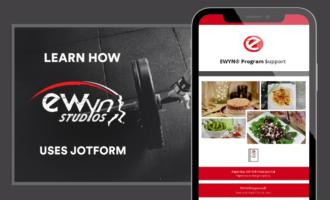When my kids were smaller, I thought the key to their happiness lay in buying them toys with a specific purpose.
A toy car to be moved around on our walkway.
A small truck that could be pushed to the top of a ramp.
However, my kids spent only a handful of minutes playing with these “purposeful” toys and then tossed them to the wayside, looking for the next best thing.
As a parent, I chalked it all off to their short attention spans.
But then something happened to change my mind.
One especially bright afternoon, my wife brought home a box full of different colored play doh and cutters.
She set it down and we watched in amazement as our kids spent up to an hour building their own creations, customizing every little detail.
They built their own cars and trucks — designs that were far more creative than anything I could have found at the store.
Observing them joyfully constructing was a lightbulb moment for me.
Happiness, for children, is about letting their imaginations roam free — in allowing them to use every ounce of creativity they have.
And it’s not so different for us as adults.
The first time I created my own software product over 15 years ago, I felt that same electricity of excitement — to come up with something that previously didn’t exist.
To be a “maker” in my own right.
It’s what I, as CEO of my company Jotform, wish everyone could experience for themselves, and a great part of why our products are no-code.
Why the rise of no-code means everyone can be a maker
For me, there are three kinds of products out there.
The first kind is what I like to call opinionated software, or products that just do something — and they do that thing very well, like Zoom or Google Calendar.
You can’t build things with these products, however.
The second kind of product is custom-built software most developers work on, like content management systems.
And then you have the third kind, which is no-code, and allows you to actually develop products. But to put it more simply, it means you don’t have to be a programmer to build things online.
“Collectively known as ‘low-code,’ these tools have been available in some form for decades,” notes Agam Shah in writing for the Wall Street Journal. “But they have grown more popular with information-technology staff and other departments as workplace automation grows and young, mobile-savvy people join the workforce.
Similarly, in his fascinating article for Medium last year, Ryan Hoover, offers one of the best examples of the no-code revolution I’ve read to date:
“Once upon a time only a very small group of software engineers — some self-described webmasters — built things on the internet. These often ambitious people spent months learning to code before publishing even the most basic website,” he writes.
Today anyone with a computer and access to the internet can build a website using tools far more powerful than Dreamweaver from two decades ago.
Jotform is and always has been a no-code product. And the main reason is that people come to our site and they’re not just doing something, they’re building forms — millions of different kinds — without having to write a single line of code. For example, if you’re a freelancer or small business owner, you can effortlessly set up a form to collect payment within minutes. You don’t have to worry about the hassle of using payment gateways or building a sophisticated website.
You can even run an ecommerce business right from a form, or easily collect instant feedback on your MVPs if you are an entrepreneur or marketer.
Our latest product Jotform Tables is another way teams can create and collaborate together on different projects. By giving people great customizable defaults and templates, we’re letting them take things into their own hands.
That’s the vision I had when I first began my company 15 years ago, and it’s what I continue to believe in to this day.
The future is no-code
In my opinion (and in those of many others) what makes no-code so unique is that it empowers millions of people to be able to make great things.
And not just that, it gives them more autonomy and confidence in their own abilities.
In the recent past, for example, only designers familiar with complicated knowledge of Adobe InDesign could create a variety of printed and digital material. But no-code tools like Canva came along in 2012 and changed the landscape for creatives across the board. Their drag-and-drop feature allows many more people to design their own layouts and stunning graphics without having to pay for expensive classes or take lengthy tutorials.
As Hoover notes “We often perceive things that are hard to do as better. Sometimes that’s true. But as these ‘no code’ tools advance, it will be silly to do it the old way.”
Please don’t get me wrong. I’m not saying custom-built software is inferior. As a lifelong techie, I’m a HUGE fan of these kinds of products.
What I’m also a fan of?
Making people’s lives easier.
Allowing anyone to be a maker.
And I believe that’s where we’re heading. Or as Hoover puts it:
As creating things on the internet becomes more accessible, more people will become makers. It’s no longer limited to the <1% of engineers that can code resulting in an explosion of ideas from all kinds of people.
When everyone can be a maker, that’s where real magic happens
For me, the most inspiring part of no-code is that it’s also giving hope and creating opportunity. Both of those things are especially crucial right now as we navigate the uncertainty of the coming months and years.
As more and more people are taking the leap into entrepreneurship, freelancing on the side, and finding many other means of expressing themselves — the real magic is within that sense of possibility.
In over a decade of developing my company, below I’d like to share two of the biggest lessons I’ve learned from building a no-code product:
1. Removing barriers allows for greater innovation
When people don’t have to go through the hassle of building things by themselves or kill themselves trying to learn those things, their creativity is unleashed. Their minds become free to come up with out-of-the-box ideas. I’ve seen this with countless users and even with my own team who regularly surprise me with their innovations.
2. Give people the right tools, and they can change the world
In my time at Jotform, I’ve often seen people using our forms for the greater good. Over the course of this pandemic, first responders, healthcare workers, and government and nonprofit organizations have all used our products to help their communities in some way or another.
But more than simply acknowledging people’s versatility and willingness to help in difficult times, I’ve also understood something far more essential: the human mind is limitless.
Where we see an end, others see a beginning.
That’s also something my kids teach me on a regular basis.
We are all makers, if only you give us the right tools.





















Send Comment:
2 Comments:
More than a year ago
Recruitment is a critical first step to help organizations achieve their goals. Here's everything you need to know about recruitment management systems to recruit like a pro.
More than a year ago
No-code sounds cheap. Better call it Jotcode. Yea you can have it for free